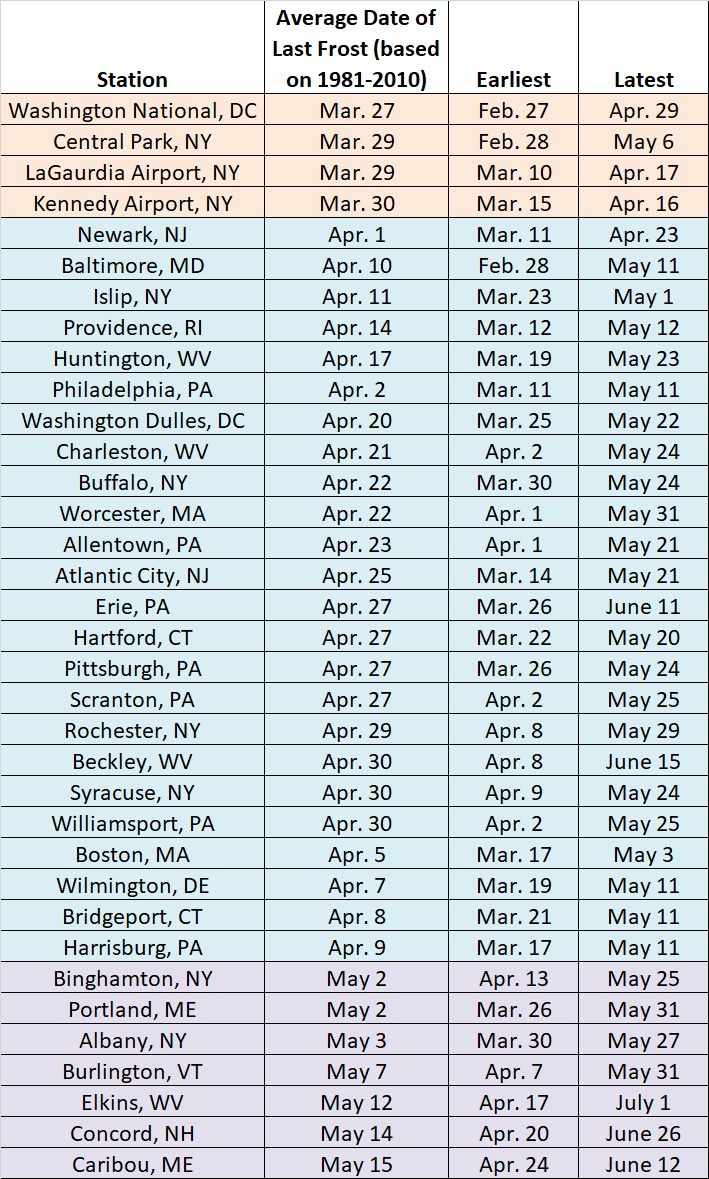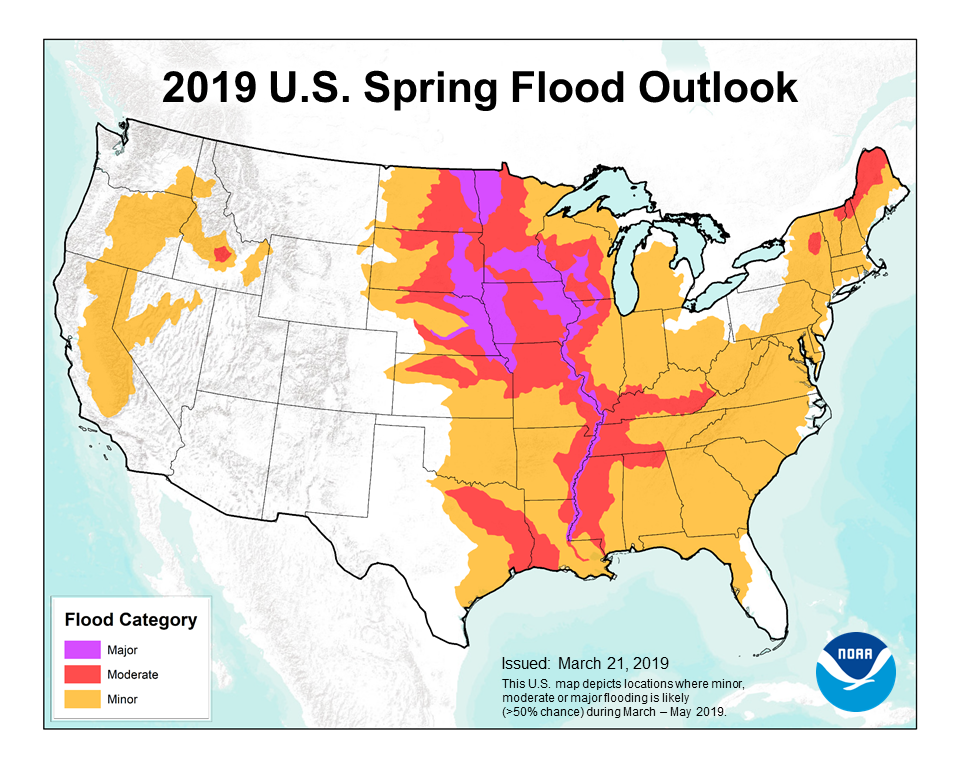Spring Frost
Although meteorological spring spans the months of March through May, the last frost of the season often sticks to its own schedule. Climate data shows that the average last spring frost typically occurs in April but has occurred anywhere from late February to early July. Washington, DC, historically has the earliest date on which the last frost occurs, March 27, whereas Caribou, ME, often experiences lingering cooler temperatures and has the latest average last frost of all the 35 major climate sites in the region, May 15.
The earliest and latest last spring frosts on record at each of the major climate sites in the Northeast span a wide range of weeks.
Although people can be eager to get their gardens started as the days get longer and the temperatures begin to warm up, many places will still experience temperatures which could be harmful to plants, even after the threat of frost seems to have disappeared. Some climate sites have experienced late-season frosts throughout June and in 1988, Elkins, WV, recorded a low temperature of 32˚F on July 1! To stay updated on any frost/freeze warnings, check out the website of your local National Weather Service office.
This Spring Flood Outlook issued on March 21 by NOAA depicts a risk of flooding for much of the Northeast.
As snowpack continues to melt, flooding concerns can increase around the same time that areas experience their last frost of the season. Flood risks can be determined by analyzing a variety of measures, including seasonal precipitation, streamflow, and soil moisture. NOAA’s River Forecast Centers provide detailed maps, warnings, and precipitation outlooks to help prepare those living and working in areas that could be impacted by flooding. There is the potential for minor to moderate flooding this spring for much of the Northeast. However, very heavy rain can cause flooding any time of the year, even in areas where the flood potential is considered low, that have little to no snow on the ground, or are experiencing dry conditions.


